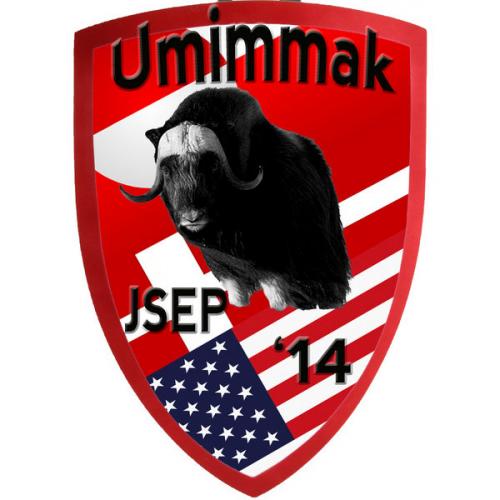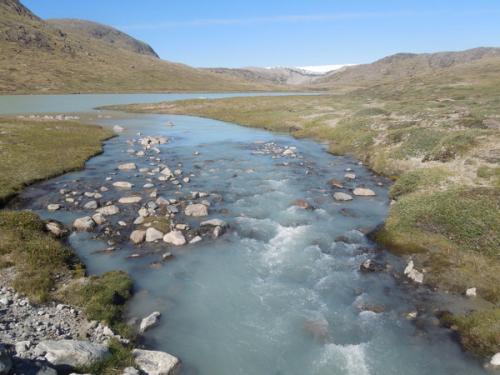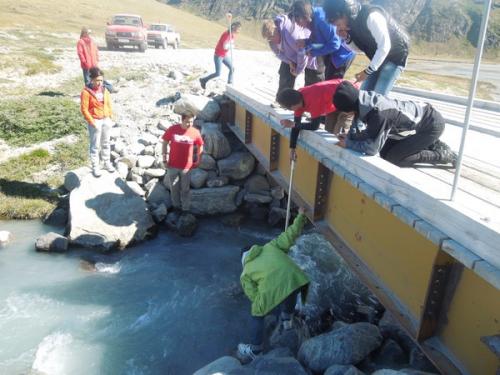Our first field school experience was setting the albedo sticks down at Point 660. How ironic that today, our last big field school experience, was at Point 660 as well. Breakfast was not bad. After about two weeks, I got used to the taste of peanut butter. Before we left for Point 660, we congregated in the classroom to finish up our projects. We were three rocks away from the gold medal at the beginning of the day, but after meticulous inspection by Rikke, our resident rock expert, we had the three we were missing: the fossil conglomerate, muscovite, and green granite. Ivik yelped tears of joy as he found out we won the gold medal. (Go Team Umimmak!)

Afterward, we packed into the cars for a final bumpy ride to the Point 660. Glancing out the window, I saw moraines flanking my sides, lakes settling in the valleys, and wildlife thriving, and I wished more people witnessed the natural beauty of Greenland. We even passed by the sea tomato researchers as they were collecting samples by a nearby lake. I never thought that this sleepy airport settlement would be a hotspot for so many international scientists.
Our main mission at Point 660 was to finish up the melting experiment we started earlier. The last time we came to Point 660, we drilled a hole into the snow/ice and stuck a bamboo stick down the hole. The goal was to come back a week later and see how much of the ice melted away and take other measurements as well (like albedo, temperature, etc.) It did not look like much ice melted, but the Umimmak group’s ice melted on average 33 centimeters in just one week! And we noticed more and bigger streams on the surface. Because of what we have learned about albedo and positive feedback loops, we think the melt is accelerating now.

Coming back from Point 660, we stopped by a stream to measure the discharge like we did with the Watson River several days ago. This stream was much smaller than the Watson River, but it was still an incredible group effort because the bridge overlooking the river was short. To find the river discharge, we had to determine the cross section of the river and the rate of speed (or velocity) of the rushing river water. Then, we took several group pictures of the whole JSEP crew.

Back at home base, Kasper gave a very informative presentation about whales. Whales are mammals, and they are very important part of the marine ecosystem. They are very versatile and tend to migrate during the different seasons. They are very common in Greenland, and Kasper even had first-hand experiences with them. Kasper went kayaking with friends and came close enough to touch the whales.


Comments